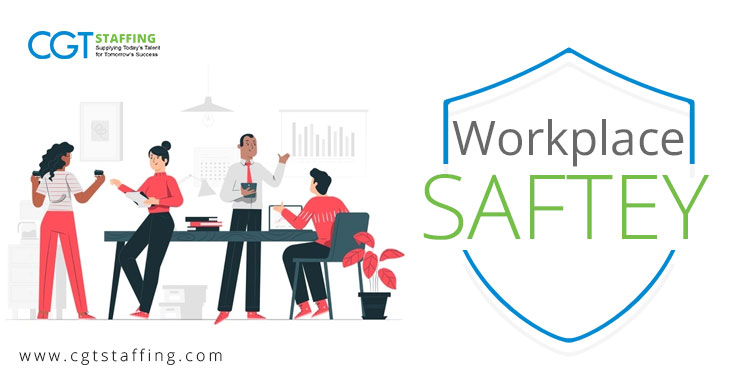In the modern business world, all firms and industries have to comply with rules, standards, and regulatory requirements. These govern everything from creating standard operating procedures on the assembly line to paid time off guaranteed by FMLA. Moreover, companies can be held accountable to a mix of international, federal, state, and even local laws.
Noncompliance with these laws and regulations can often have serious repercussions, ranging from fines to penalties to litigation.
Among the many workplace requirements employers have to meet, workplace safety is always a significant priority. This blog will attempt to offer a brief introduction to workplace safety, best practices, and incorporate them into a workplace. Scroll down for more information.
Table of Contents
Why Is Workplace Safety So Important?
Workplaces require consistent productivity and reliability from their workforces. However, they also owe certain things to their workers in return. This is not just limited to the compensation and benefits plan for a role. Certain conditions must be universally available to all workers. A workplace devoid of undue risks leading to injuries, accidents, or illnesses is one such example – all workers are entitled to a safe workplace.
This is not optional, so the size of an employer should not matter when it comes to offering safer working conditions. Nor is it something that offers benefits limited to workers alone. Both employers and employees stand to gain from a workplace that is free from health and safety hazards.
Implementing a health and safety plan should always be a priority for business leaders everywhere. It doesn’t just protect workers or managers, but equipment, building, and other key business assets as well. Moreover, it safeguards a firm’s reputation against charges of negligence or malintent.
Why Do Workplaces Need Safety Practices?
Businesses must make every effort to create and maintain a safe working environment for all their workers. The reason is simple: casualties in the workplace are a very grave occurrence. The human impact of the loss can be almost immeasurable.
The impact on businesses can be just as bad, especially if it emerges during a workplace investigation process that the casualty was due to an accident caused by poor safety conditions.
The incident can open up an employer to an examination by health and safety services, and potentially a large penalty to follow up. That’s not to mention the risks of litigation from workers, former workers, or their families. The impact of poor safety conditions in a workplace can often exceed six figures. This is exactly why every business needs to implement rules ensuring employee safety.
How Do Businesses Benefit from Appropriate Safety Measures?
The last section paints a fairly grim picture of a hypothetical casualty in the workplace. Any such event should indeed be a cause for significant concern. But having appropriate measures in place to ensure workplace safety carries many advantages beyond being in regulatory compliance. A business that deploys them right can reap several major benefits of safety rules, including:
Increased Productivity
The biggest advantage to safer working conditions is an increase in productivity. Employees that are healthy, secure, and cared for exhibit higher levels of motivation and productivity.

Moreover, infrequent instances of injuries or workplace bullying result in an environment more conducive to productivity. Employees don’t have to face as many distractions and have more time to devote to productive output.
Improved Workforce Health
Another huge benefit of a safe working environment is the boost to overall workforce health. This includes both employers and employees. With a lowered risk of injuries, accidents, hostility, and other threats, the workforce will generally be in better overall health.
That’s not just good for productivity, but it is also something that can help businesses appear more desirable to new candidates when hiring. Organizations and stakeholders like a staffing agency can leverage this for more success in their talent acquisition strategies.
Reduced Accidental Downtime
Downtime due to accidents is often higher in certain types of industries. For example, a mortgage staffing agency is less likely to hear about injury complaints from placements than a manufacturing staffing agency.
However, accidents can and do happen, and they often force employee downtime while they recover from injuries. This reflects lost productivity and output, something a good safety policy can help prevent.
Reduced Breakage and Damages
Unsafe conditions don’t just harm people. They can also cause damage to equipment, hardware, and even structures. Almost every business has some form of breakages expenditures. It makes sense to have policies that limit this expenditure to the bare minimum.
Lowered Absenteeism
Employee absenteeism can often be a thorn in every workforce manager’s side. Employee absenteeism usually disrupts workflow, causes delays, and lost productivity. While absenteeism may never completely disappear, the presence of safety protocols can help reduce absences caused by unsafe working conditions.
Tips on Creating a Safer Workplace
Workplace safety varies from workplace to workplace. It depends heavily on the type of business and industry. But it also depends on what rules, regulations, and industry best practices apply to a business.
Therefore, it can be difficult to create a standardized policy that applies perfectly to all types of businesses. However, there are still general similarities in the approach to safer working conditions. The following may serve as useful starting points to start building a more comprehensive policy:
- Identifying potential workplace hazards to protect against.
- Creating and implementing safety programs across the firm.
- Offering frequent worker training and refresher courses on safety.
- Standardizing the use of safety equipment, apparel, and safe practices.
- Creating a culture open to workers reporting unsafe conditions.
- Combating conditions that impact mental health safety.
- Making efforts to curtail the use of alcohol or substances that impair alertness.
- Defining emergency protocols and reinforcing them through drills.
- Remaining alert to any issues that may turn into a potential safety hazard.
Frequently Asked Questions
Why is safety important?
It drives down medical costs, litigation risks, absenteeism, and workforce health issues.
How to provide safety in the workplace?
Every workplace is different but identifying potential hazards, following the law, and best practices help.
What event had an enormous effect on US workplace safety?
A deadly factory fire in 1911 resulted in the birth of the first fire safety regulations in the US.
Who benefits most from workplace safety regulations?
Both employers and employees benefit equally.
Who is responsible for safety in the workplace?
The employer.
What is psychological safety in the workplace?
Protection from bullying, harassment, abuse, or threats of workplace violence that impact mental health.
What are the different types of workplace safety?
There are 6 types. of workplace safety
- Safety
- Biological
- Physical
- Ergonomic
- Chemical
- Work organization hazards.
How to conduct a workplace safety audit?
Identify the areas to audit, determine audits frequency, document findings, report them, and create an action plan.
